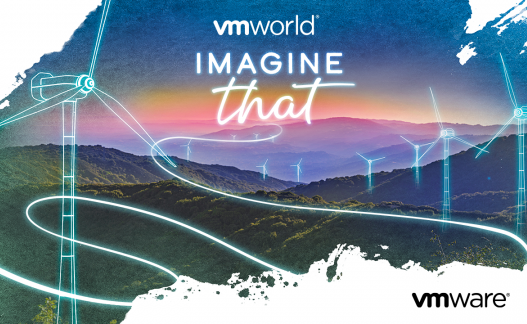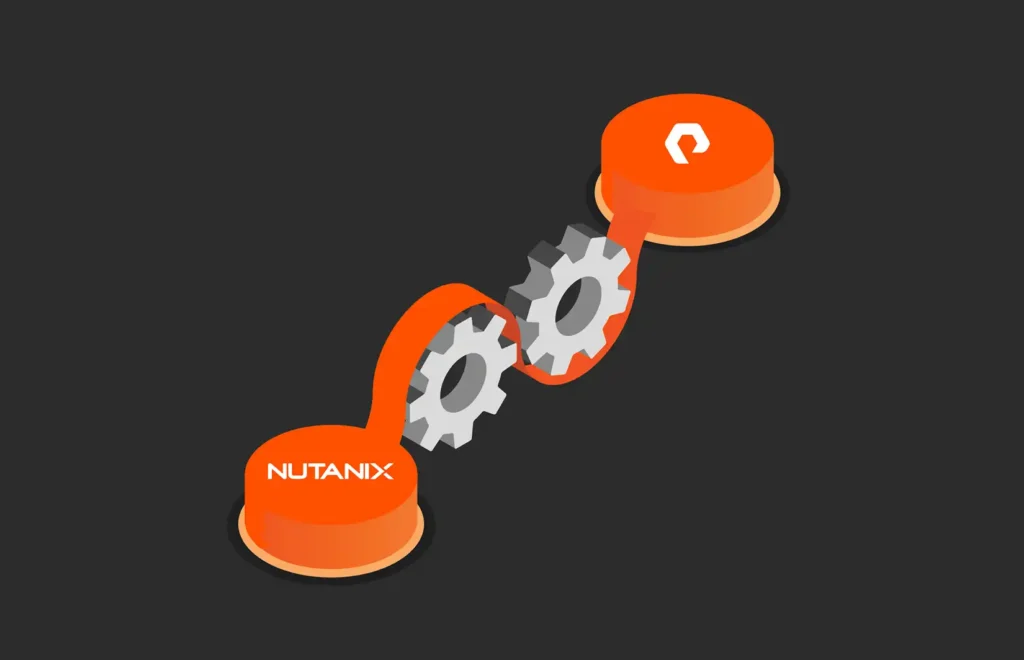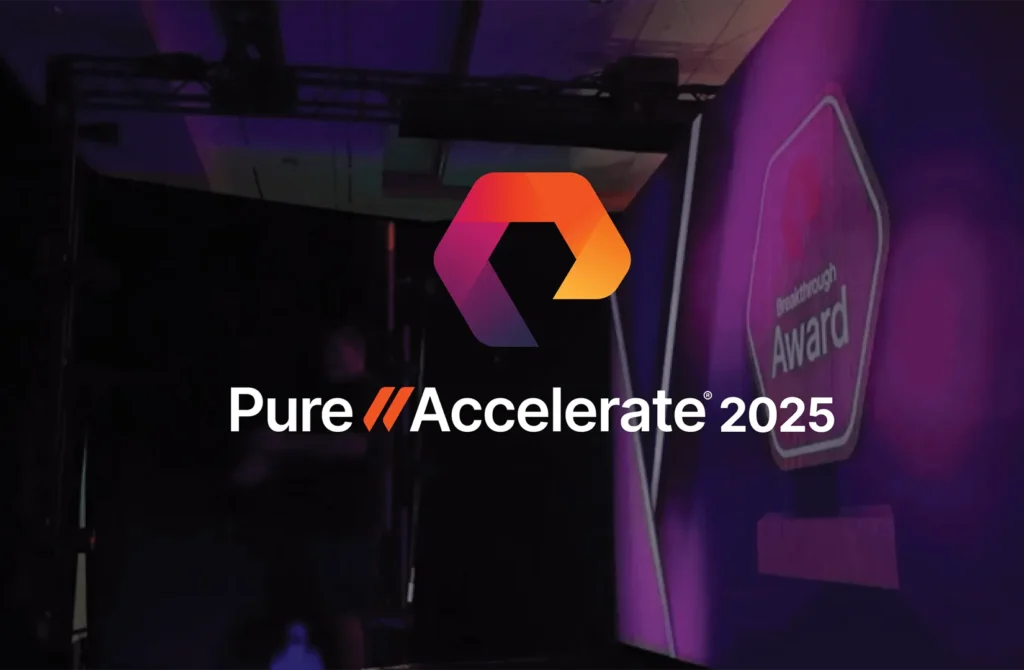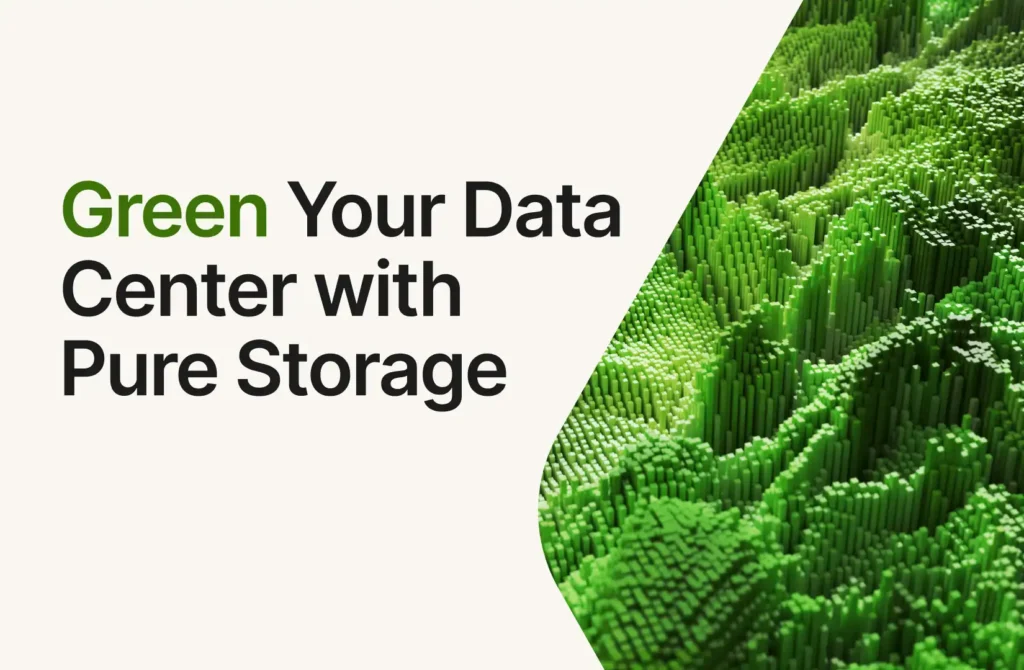VMworld 2021 was a good time to look back—and look forward.
For the past 10 years or so, putting an application into a virtual machine was a clear winner. And for a multitude of reasons: flexibility, scalability, mobility… Name an -ility in IT and it’s likely a benefit of virtualization. In 2021, virtualization still makes sense for many (and maybe even most) applications. And it will continue to. But, as with many things, solving one problem creates more complex problems to solve. It’s the ongoing manifest push forward in a field that never fails to move at wire speed.
Containers
In recent times, we’ve seen quite a bit of uncertainty around “the right thing to do” with your IT infrastructure. From an application perspective, this has been focused on the rise of containers (and of course Kubernetes as an orchestration layer).
Do I containerize old applications?
Just new ones?
Just specific ones?
This is a fundamental difference between the move from bare metal to virtualization. With virtualization, the application didn’t really change. Arguably, you weren’t really even virtualizing applications—you were virtualizing operating systems (or, more accurately, the hardware beneath them).
The operating system (OS didn’t really detect a difference, and therefore, the application didn’t either. Nevertheless, both the application(s) and OSs gained big-time benefits from the move. So the question “to virtualize or not” wasn’t, for the most part, an “if” but a “when.” No change in my application, but I can still get these benefits? Where do I sign up?!
Containerization is different. This is a shift in application architecture. It divorces the application from an OS (to some extent). But, to take true advantage of this change, the applications must manage state, scaling, and several other pieces differently. So the decision to containerize an application doesn’t answer the same question that virtualization posed. Or, at least, the answer isn’t always the same. It doesn’t mean every application can’t be containerized, but it does mean your efforts might be best focused elsewhere.
What can and should take advantage of containerization?
What is perfectly fine where it is?
Maybe everything is fine where it is, and I should focus on new apps only?
Furthermore, and critically, this doesn’t mean virtualization is circling the drain. OSs are still needed, even in entirely containerized environments. Virtualization benefits still apply to the infrastructure layer. A good proof point of this: What does basically every service in AWS use? From EKS to RDS? The answer: EC2. AWS virtual machines. You may or may not see those instances in your account, but that’s the backend. This is why VMware is so well set up for this shift—consistent infrastructure management for your VM-based or container-based applications. And ESXi underpins it all. With Tanzu, VMware provides the full Kubernetes experience in addition to all of the industry-leading virtualization features that have changed our work lives in the past two decades. This is just a sample of what you can expect VMworld.
Cloud
As always, our industry doesn’t just ask one question but many. It isn’t just about how you should architect an application but also where it should even live. To exacerbate this, it isn’t just about one application but the whole data center.
Should I do cloud?
How should I “do” cloud?
Should it be public? Private? Hybrid? Multi?
What does “multi” even mean for my organization?
We could argue about the true definition of these types of clouds all day long (and, alas, we do), but in the end, it means something slightly different to every organization. Company A goes 100% public in one cloud. Another goes 50/50 across two different public clouds. Another uses multiple public clouds and on-premises. Another has some public and some on-premises. Another stays entirely private. Another doesn’t put entire applications in one place, but certain parts of the application or application lifecycle are in the place that makes the most sense.
Ransomware
While there are a lot of existential questions around IT infrastructure, ransomware is the most pressing, concerning, and scary. I was recently at the hospital for the birth of my son when it struck me how terrifying it would be if the systems went down. They have so much critical data. And ransomware poses a clear and constant threat. This is such a huge problem that it makes everything else discussed in this post almost seem trivial.
How do I prevent it? Is that even really possible?
How do I recover? How do I ensure that I can recover?
How can I recover fast enough so that my business isn’t destroyed?
Ransomware is turning what used to be plan B (data protections) into plan A.
So what does all of this have to do with Pure Storage? A lot!
What Pure Delivers at VMworld
While Pure works with many partners, VMware has always been and will continue to be a critical and strategic technology partner. These questions around containers, <insert type> cloud, ransomware, and more are key pieces of our VMware partnership.
When it comes to the vSphere layer, we’ll continue to promote and build best-in-class storage platforms and integrations. FlashArray Virtual Volumes provide the best way to bring the storage features we build to the level of granularity where they matter (the VM). We’ll continue to focus on the latest and greatest technologies like NVMe-oF to provide the highest level of storage performance. And in turn, apply these to the Tanzu layer, where the granularity of features matters even more. Who cares about VM granular? It’s application-granular with the persistent volume claim (the virtual disk). This is where vVols and Storage Policy-Based Management matter even more. They’re core components of the Cloud Native Storage provisioning layer in Tanzu. But when it comes to containers, higher and deeper control and configuration is required, and this is why we brought Portworx into the mix. With the 2.8 release of Portworx, there’s even tighter integration with the Tanzu storage layer. Rounding out the portfolio, FlashBlade® provides extremely high-performance object storage for the growing object use case in VMware and container environments.
When it comes to cloud choice, Pure as-a-Service™ is a subscription licensing model that allows flexible relocation of storage capacity across clouds. The data compatibility between on-premises Virtual Volumes on FlashArray to direct volumes in Pure Cloud Block Store in AWS or Azure provides easy mobility of data sets between clouds. Pure as-a-Service and this direct data mobility provide ease of choice of not only what data but also when and where you need it. And, it also gives you the ability to alter that choice. Pure continues to expand these cloud choices through additional solutions developed with partners such as Equinix Metal and FlashStack® as-a-Service. We also have a design partnership for VMware Cloud Foundation.
Finally, pulling all of these things together provides comprehensive ransomware protection and recovery. These granular feature assignments and application integrations, as well as the performance of our storage platforms, play a huge role in not only configuring protection but also making it fast and simple to restore.
Pure Sessions at VMworld 2021
During our sessions at VMworld, we covered the technical details of all of these topics and help address your questions:
Core Storage Best Practices Deep Dive: This session returns from last year and covers how to configure your external storage in the best possible way. VMware’s Jason Massae and I host the session. It’s always one of my favorites because storage is where it all starts.
Want to Run Production Apps in Tanzu? Learn How with Portworx Data Services: Find out the how and why of Portworx in Tanzu. I host this session with my Pure colleagues Jon Owings and Kyle Grossmiller. They do an amazing job demystifying Tanzu with vSphere. If you’re interested in Tanzu in general, this is a can’t-miss!
Can 1+1=3? It Can When Using Joint Solutions from Pure Storage and VMware: Industry veterans Vaughn Stewart from Pure Storage and Lee Caswell from VMware discuss key solutions customers are adopting today including vVols, VMware Cloud Foundation, and Portworx for Tanzu and how Pure and VMware are partnering to deliver the solutions you need.
Build and Publish a PowerShell Module to the PowerShell Gallery: Script. Make it a module, Pure’s David Stamen shows you the process to turn PowerShell scripts into a cloud-ready module accessible on any computer at any time with the PowerShell Gallery.
vSphere Locked Up by Ransomware – How to Make Bail? (asking for a friend): Ransomware is scary – but what does an actual attack look like and is it possible to recover quickly? Listen to Andrew Miller – Pure’s Principal Technology Strategist – discuss the anatomy of an attack, how to apply a defense in depth strategy, and go into a number of architectural design decisions to help mitigate attacks.






